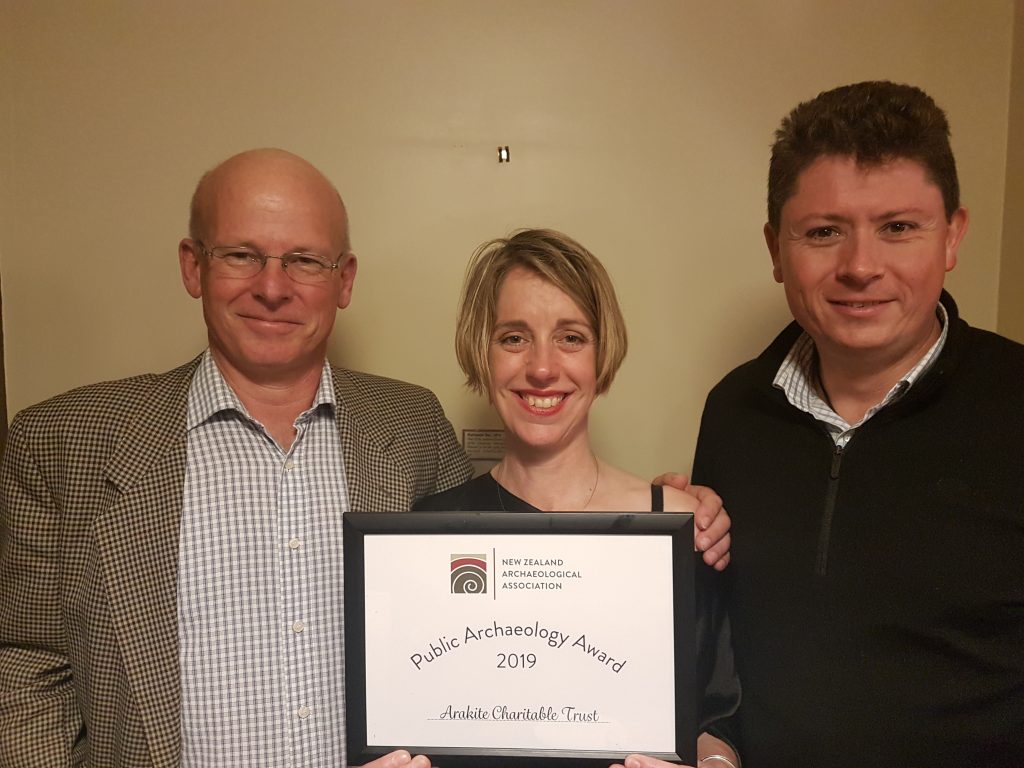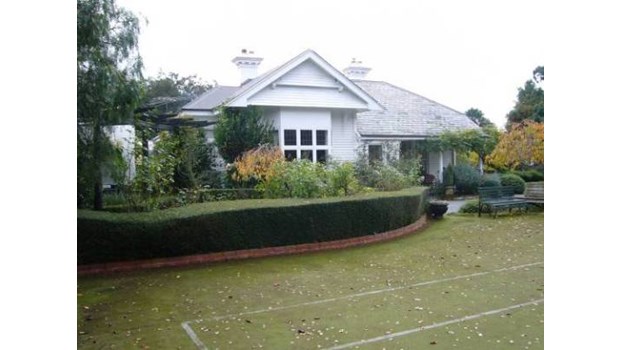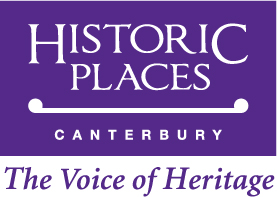Te Pitowhenua Waitangi Treaty Grounds is the country’s first National Historic Landmark, Associate Minister for Arts, Culture and Heritage Grant Robertson announced at Waitangi today.
The new programme to establish National Historic Landmarks will help protect New Zealand’s defining moments in time and the special places that are the cornerstones of national identity.
“Some of these sites are associated with important and sometimes challenging discussions about the events that have shaped our past and will influence our future,” Grant Robertson says.
“Given the cultural, historic and social significance of this place, both before and after 6 February 1840, it’s appropriate the Waitangi Treaty Grounds is New Zealand’s first National Historic Landmark.”
Te Minita Whanaketanga Māori Minister for Māori Development Nanaia Mahuta says places such as Waitangi have deep significance to New Zealanders and its safeguarding is important to us all.
“Following discussions with site owners, iwi and the community, further Landmarks will be identified and added to the programme to recognise and preserve the heritage value of these places throughout the country,” Nanaia Mahuta says.
“A key objective of National Historic Landmarks is to help prioritise Government’s heritage conservation efforts. This includes developing long-term risk planning and management to ensure these places are earthquake resilient and protected from other natural disasters as much as possible.”
The National Historic Landmarks/Ngā Manawhenua o Aotearoa me ōna Kōrero Tūturu programme was introduced by the Heritage New Zealand Pouhere Taonga Act 2014. Heritage New Zealand works in partnership with Manatū Taonga Ministry for Culture and Heritage and other stakeholders including the Department of Conservation to deliver the programme.
Details about National Historic Landmarks is available on the Heritage New Zealand Pouhere Taonga website at: www.heritage.org.nz/the-list/national-historic-landmarks
Questions and Answers
Q 1: What is the National Historic Landmarks programme?
A: The National Historic Landmarks programme was introduced by the Heritage New Zealand Pouhere Taonga Act 2014 (HNZPTA) to acknowledge those places that New Zealanders demonstrably care about as cornerstones of national identity.
Q 2: Haven’t we already got a Landmarks programme?
A:Tohu Whenua is the new name of a tourism programme covering a nationwide regional group of visitor assets. A pilot programme, under the name Landmarks Whenua Tohunga, was initiated in 2015 in Northland. Otago followed with the West Coast included in December 2018 under the new name Tohu Whenua. The National Historic Landmarks programme, in contrast, recognises heritage places of deep significance to New Zealanders as the stories they tell are meaningful and their survival important to us all.
Q 3: Who runs Tohu Whenua?
A: Tohu Whenua is run by Manatū Taonga Ministry for Culture and Heritage, the Department of Conservation and Heritage New Zealand Pouhere Taonga. The aim is to showcase our historic and culturally important places to locals and tourists in a coordinated way. Heritage New Zealand now oversees this programme, with a programme manager based in Wellington.
Q 4: What is the aim of National Historic Landmarks?
A:The aim is to protect heritage places most important to New Zealanders through long-term risk planning and management, including from natural disaster. These places have rich historical, physical, and cultural significance and without them we are losing something special that identifies us as New Zealanders. A key policy objective of National Historic Landmarks is to help prioritise the government’s heritage conservation efforts, including earthquake strengthening.
Q 5: Who runs National Historic Landmarks?
A:The National Historic Landmarks programme was introduced by the Heritage New Zealand Pouhere Taonga Act 2014 (HNZPTA) as a way to better recognise and protect this country’s most outstanding heritage places. Heritage New Zealand works in partnership with Manatū Taonga Ministry for Culture and Heritage and other stakeholders to deliver and promote the programme.
Q 6: How much is National Historic Landmarks costing the taxpayer?
A:The programme is being undertaken by Heritage New Zealand within existing baseline funding. Heritage New Zealand adjusted some of its programmes to generate the financial and capacity requirements for National Historic Landmarks.
Q 7: What are the sites selected for National Historic Landmarks?
A:In 2015 Heritage New Zealand, in consultation with Manatū Taonga and the Department of Conservation, short-listed potential National Historic Landmarks. Te Pitowhenua Waitangi Treaty Grounds, Meretoto/Ship Cove and the National War Memorial (Wellington) are currently being progressed. Under the HNZPTA criteria and process, Heritage New Zealand recommends places for inclusion following public consultation with the Minister for Arts, Culture and Heritage making the final decision.
Q 8: How many National Historic Landmarks will there be?
A:Recognition is not based on achieving a set number, but rather by sites put forward meeting several thresholds. Any site can be proposed for recognition as a National Historic Landmark, and is then assessed in terms of heritage significance, risk management and community engagement. Rigorous criteria are applied to the assessment of what makes a National Historic Landmark.
Q 9: What is this ‘rigorous criteria’?
A:Places on the National Historic Landmarks list must be of outstanding national heritage value, having regard to the outstanding historical significance of the place in relation to people, events, and ideas of the past; the outstanding physical significance of the place in relation to its archaeological, architectural, design, and technological qualities; and the outstanding cultural significance of the place to tangata whenua and other communities in relation to its social, spiritual, traditional, or ancestral associations. Any nomination must first be listed on the New Zealand Heritage List and put through a public consultation process before being presented to Associate Minister for Arts, Culture and Heritage, Hon. Grant Robertson for approval.
Q 10: Are there any regulatory impositions on places deemed National Historic Landmarks?
A:All National Historic Landmarks have to demonstrate appropriate legal protection and risk management planning. Should Heritage New Zealand consider these are not fulfilled anymore by the owner a recommendation can be made to the Minister for Arts, Culture and Heritage to remove the place’s recognition as a National Historic Landmark.
Q 11: So are the National Historic Landmarks places the government is going to protect if there is a natural disaster?
A:As these places are those recognised as most valuable to all New Zealanders priority will be given to ensuring they remain part of our history. Insightful conservation is key to the long-term protection of these places. To achieve this will require close relationships between government and those caring for these places to ensure long-term plans and daily efforts are closely aligned, with natural disaster risks appropriately managed.
Q 12: Why was an Act, the Heritage New Zealand Pouhere Taonga Act 2014, required to get them off the ground?
A: National Historic Landmarks/Ngā Manawhenua o Aotearoa me ōna Kōrero Tūturu was introduced by the Heritage New Zealand Pouhere Taonga Act 2014 to better recognise and protect this country’s most outstanding heritage places and help prioritise the government’s heritage conservation efforts. Heritage New Zealand was charged with identifying places of outstanding national heritage value in terms of their historical, physical, and cultural significance. The purpose of a National Historic Landmarks list is to promote an appreciation of the places of greatest heritage value to New Zealanders and the long-term protection of such places, including protection from natural disasters.
Q 13: How will I recognise one?
A: Every National Historic Landmark will have a wakahuia, a carved treasure box holding the certificate of Landmarks status, as a symbol of its National Historic Landmarks recognition. This recognition will be communicated via Heritage New Zealand and the owner’s website

















